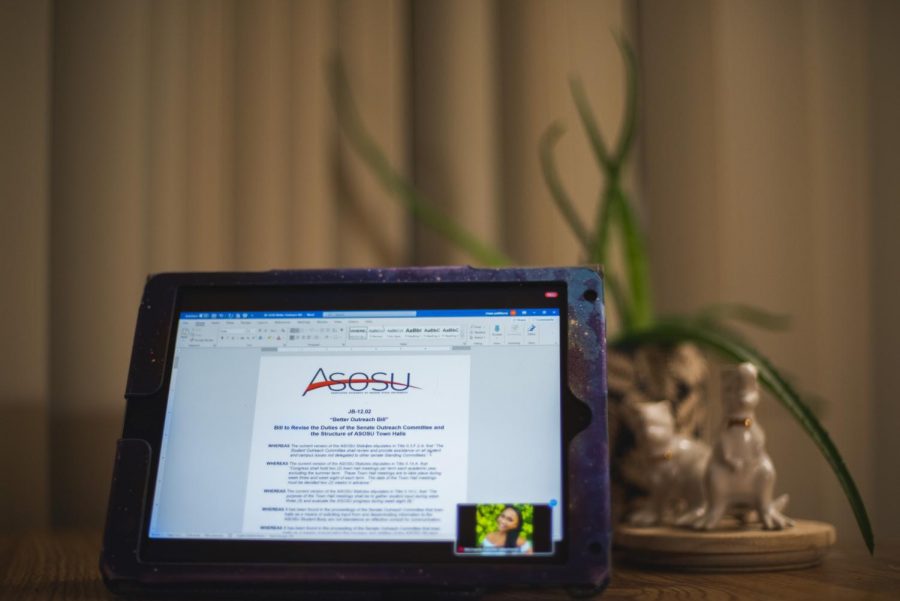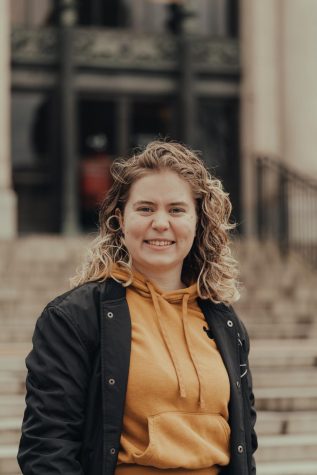Student Fee Committee discussions impacted by COVID-19 concerns
January 8, 2021
In a meeting held by the Student Fee Committee to discuss the fees for the 2021-2022 school year, financial problems due to COVID-19 raised many concerns among students.
In the first congressional joint session held on Jan. 6, each of the eight student-fee funded units introduced the fee increases that they are requesting for the next fiscal year. These eight units are the Family Resource Center, Associated Students of Oregon State University, Student Experience and Engagement, Recreational Sports, Performing Arts, the Memorial Union, the Human Services Resource Center and Athletics.
Many of these fee increases were for building reserves or equipment management, which came in the form of decision packages and are different from the normal Current Service Level fees that students pay.
“There’s CSLs and the decision packages,” David Park, SFC chair said. “The CSL is the amount of dollar fee or percentage that a unit needs to continue current services onto the next fiscal year without any addition of any services or programs… The decision package is anything that’s above a CSL. It’s any expansion of a program or addition of certain equipment [and] additional building reserves that people need.”
Park said these decision packages were started two years ago by the previous chair, Safi Ahmad, to give more transparency to the process so ASOSU members and students could know what money amount the units needed to continue and what money amount was extra. These decision packages typically include building maintenance and equipment updates.
One of the specific units that asked for a decision package was the MU, as those who maintain the building are hoping to build up enough reserves to do a renovation on the MU in the next eight years or so.
Deb Mott, director of the MU, explained via email that there are a lot of things in the building, such as flooring, roofing and electrical, that need to be replaced and updated, especially because the building is nearly 100 years old.
“Anytime a building is built, there has to be a reserve account with it,” Mott said. “And the reserve account is like a savings account… so the reserves build up money over time that also gains interest. We’re relying on that interest and the income from fees to make sure that when the really big expenses come, we have the money to do it.”
The MU asked for a decision package of $2 per student for the next fiscal year, totaling $115,240. They’re hoping to ask for this decision package of $2 from students through at least 2028 for the renovations that the MU needs. They also asked for a 7.81% fee increase from $71.02 to $76.57.
The SEE was another unit that asked for a decision package of $1.39 per student, totaling about $80,000, for building and equipment updates. The student fee increase they requested was 4.49% from $93.04 to $97.84.
The decision packages in particular were the cause of a lot of discussions during the meeting due to how COVID-19 has affected finances throughout the past year.
Nat Young, a graduate student in Integrative Biology and ASOSU senator, was one of three students to ask many questions on the decision packages during the meeting and wanted to stress that, during the pandemic, money should be being spent carefully and on the things that students need most.
“There are so many student needs and so many student needs that are going unaddressed right now, so I think if you talk to any student, each student has a different emerging need because of the situation they’ve been put in over the last nine months,” Young said. “It just strikes me as, like, there already is money in the reserve. I understand that we need to put more money in the reserve to plan for later, but is this the year?”
In light of the current pandemic, Young said she feels the SFC should be focusing more heavily on the areas that students need, such as proper on-campus housing for students, childcare, the food kitchen, or Counseling and Psychological Services, all of which are currently facing long wait times and monetary issues.
The FRC and HSRC—which many of these programs fall under—asked for a 16% increase from $13.56 to $15.73 and a 27.28% increase from $14.99 to $18.99, respectively.
“There’s so much need for [these], and not enough resources to go around that I’m kind of skeptical of putting money in a pot for later,” Young said.
Another concern that Young brought up was about how much power students have in making decisions about the student fee amounts.
“I just wish there was a little more ability to push back against these things,” Young said. “I think everything ASOSU funds, everything the student fees fund, are super valuable, I just question certain amounts. It’s not that we shouldn’t be funding them at all… My ability to bring up issues with some of these amounts is super low at this point in the process.”
ASOSU is student-led and anyone who wants to get involved is encouraged to do so. The deadline for ASOSU candidacy is Jan. 15 at 11:59 p.m. More information can be found on the ASOSU elections website.
“Consistent with other student fee-funded units, students are represented on our student advisory board, the SFC and ASOSU,” Eric Beeler, Program Coordinator in SEE said via email. “Students can also pitch to their advisers if there is the equipment they need for their work.”
While the SFC did not decide whether or not any of the financial packages would be accepted in their first meeting, they will be holding a second meeting on Wed. Jan. 13 at 6 p.m. and any interested students can attend by contacting SFC chair David Park.

























































































































